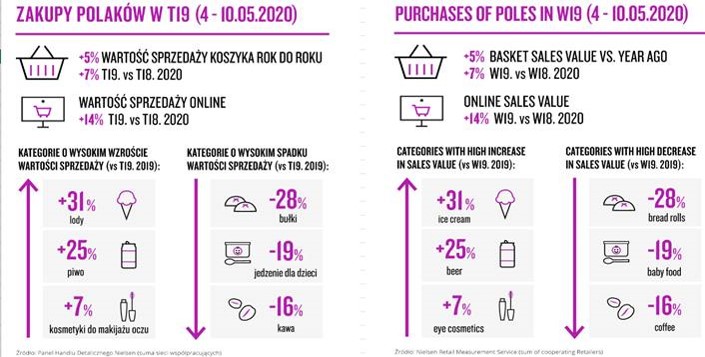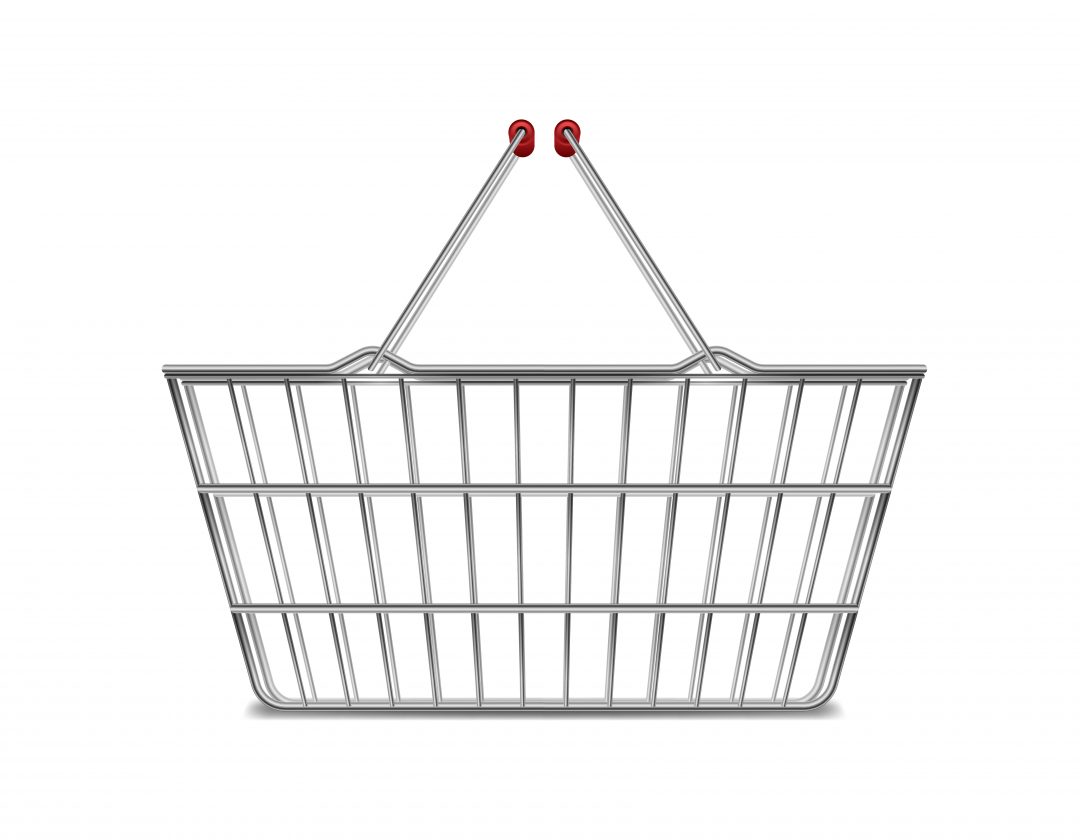Nielsen published subsequent data from its retail panel, through which the company analyzes the consumer behaviour of Poles in the era of pandemics.The grand opening of stores and shopping centres after the May long weekend – although it did not end in a flood of people (maybe except of IKEA https://dziennikpolski24.pl/krakow-tlumy-ruszyly-na-zakupy-do-sklepu-ikea-zdjecia/ar/c1-14951382) ), resulted in a “return to normality” in many areas.
The data on the FMCG segment shows us that, •although frozen food and alcohol still sell a dozen or so per cent better than the year before (somehow you have to deal with the evenings in front of the TV!), •hygiene products, dairy products and animal food return to last year’s results, •the category of cosmetics and fragrances, which we have entirely abandoned over the previous two months, returned to the pre-pandemic results in the first week of May. The reason for this is probably that, firstly, you can buy it (Douglas, Hebe or Sephora are open), and secondly – we can finally leave the houses, so we need to look presentable! •

The impact of loosening the restrictions, improving the weather and the possibility of spending time outdoors, can also be seen in more accurate data comparing the post-school week with the corresponding period of last year (and by the way with the last week of April 2020).The average shopping basket, both in relation to last year and last week, increased its value (by 5% and 7%, respectively) – while the cost of the online shopping basket continues to grow by two digits.It was warm, so you could go out to the park and make a barbecue, and in any way emphasize sex appeal from behind the mask – hence the increase in the sale of ice cream, beer and eye makeup cosmetics.
Downward trends are also exciting. We probably continue to use previously made coffee stocks. And the rise of home cooking (also for children) may negatively affect the sales of ready-made food products for children. Especially since many of these products were bought to eat outside.
These trends show that, although we are slowly returning to a new normality, changes in habits can be permanent. If the order to use masks is maintained, the “lipstick effect” will probably be replaced by the “eye pencil effect”, and baby food producers may take radical action in defence of the decreasing sales of its category.


